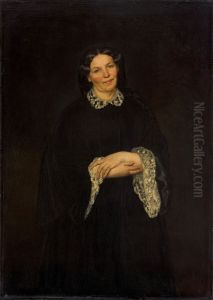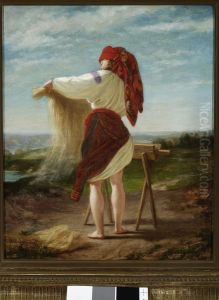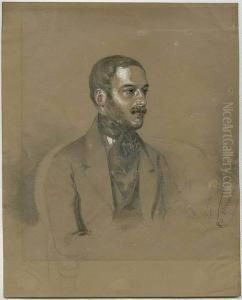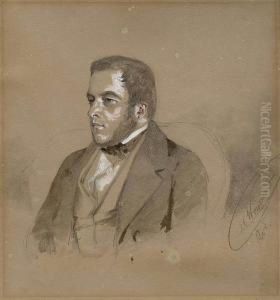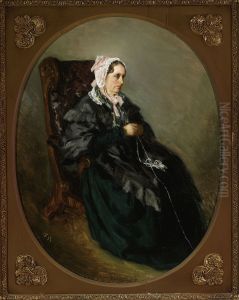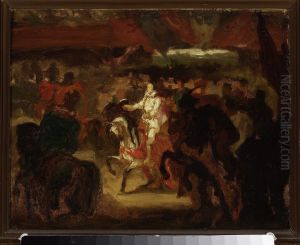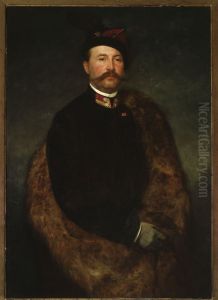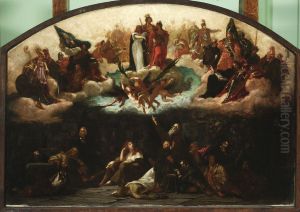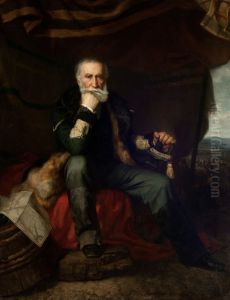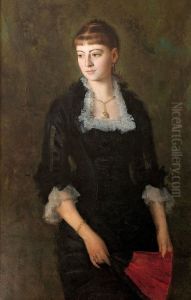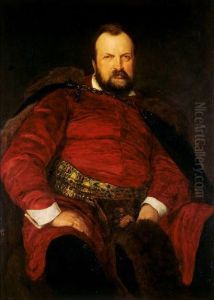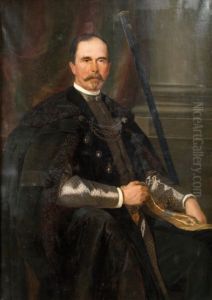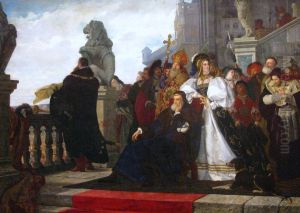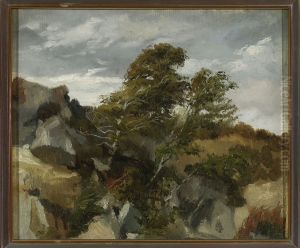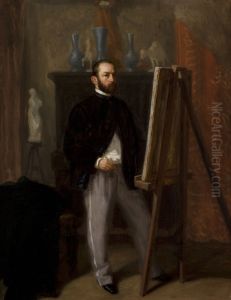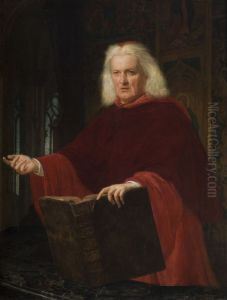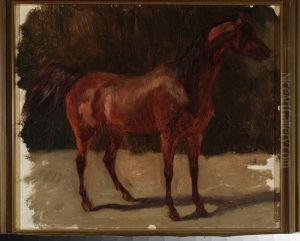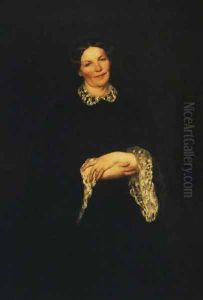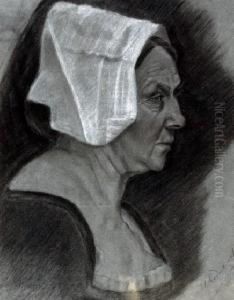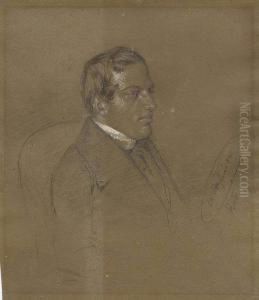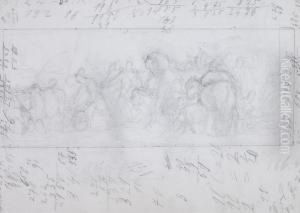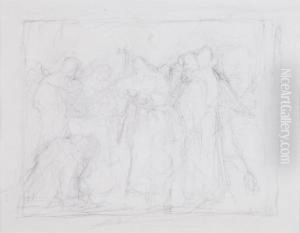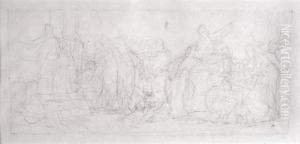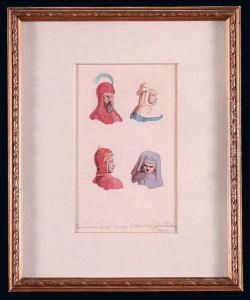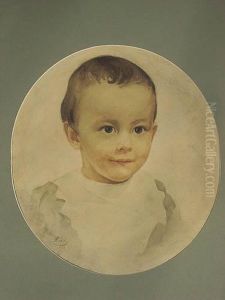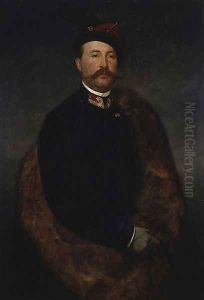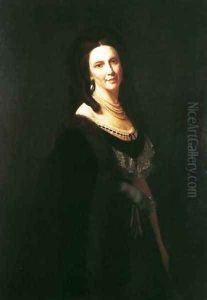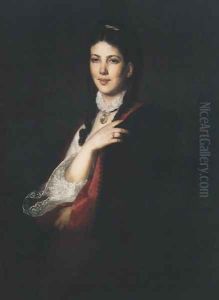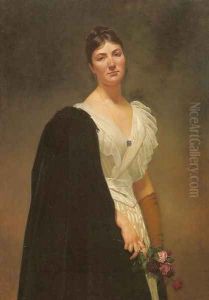Henryk Rodakowski Paintings
Henryk Rodakowski was a prominent Polish painter, known for his contributions to portrait painting and for being a significant figure in the artistic life of 19th-century Poland and France. Born on July 9, 1823, in Lwów (then part of the Austrian Empire, now Lviv, Ukraine), Rodakowski grew up in an environment that fostered his early interest in the arts. Despite initially studying law at the University of Vienna, he pursued his true passion for painting by enrolling in the Academy of Fine Arts Vienna and later continuing his education in Paris, which was the epicenter of the art world at the time.
In Paris, Rodakowski was influenced by the works of leading French artists and developed his own distinctive style, which was characterized by its romantic sensibility and emphasis on the psychological depth of his subjects. He became particularly noted for his masterful portraits, which captured the personality and essence of his sitters with great sensitivity and skill. His works were exhibited in many prestigious venues across Europe, including the Paris Salon, where he gained recognition and accolades for his artistic achievements.
Beyond his achievements in portraiture, Rodakowski also engaged with the Polish émigré community in France, contributing to the cultural and political life of the Polish diaspora. His artworks often reflected his deep connection to his Polish heritage and his support for the cause of Polish independence. Despite his success abroad, Rodakowski remained closely connected to his homeland, where he was respected as a key figure in the development of Polish art.
In the later years of his life, Rodakowski returned to Poland, where he continued to paint, mentor young artists, and participate in the cultural life of the country. His legacy is preserved in the collections of major Polish museums and galleries, where his works remain a testament to his artistic talent and his dedication to portraying the human spirit. Henryk Rodakowski died on December 13, 1894, but his contributions to the art world continue to be celebrated for their enduring beauty and emotional depth.
